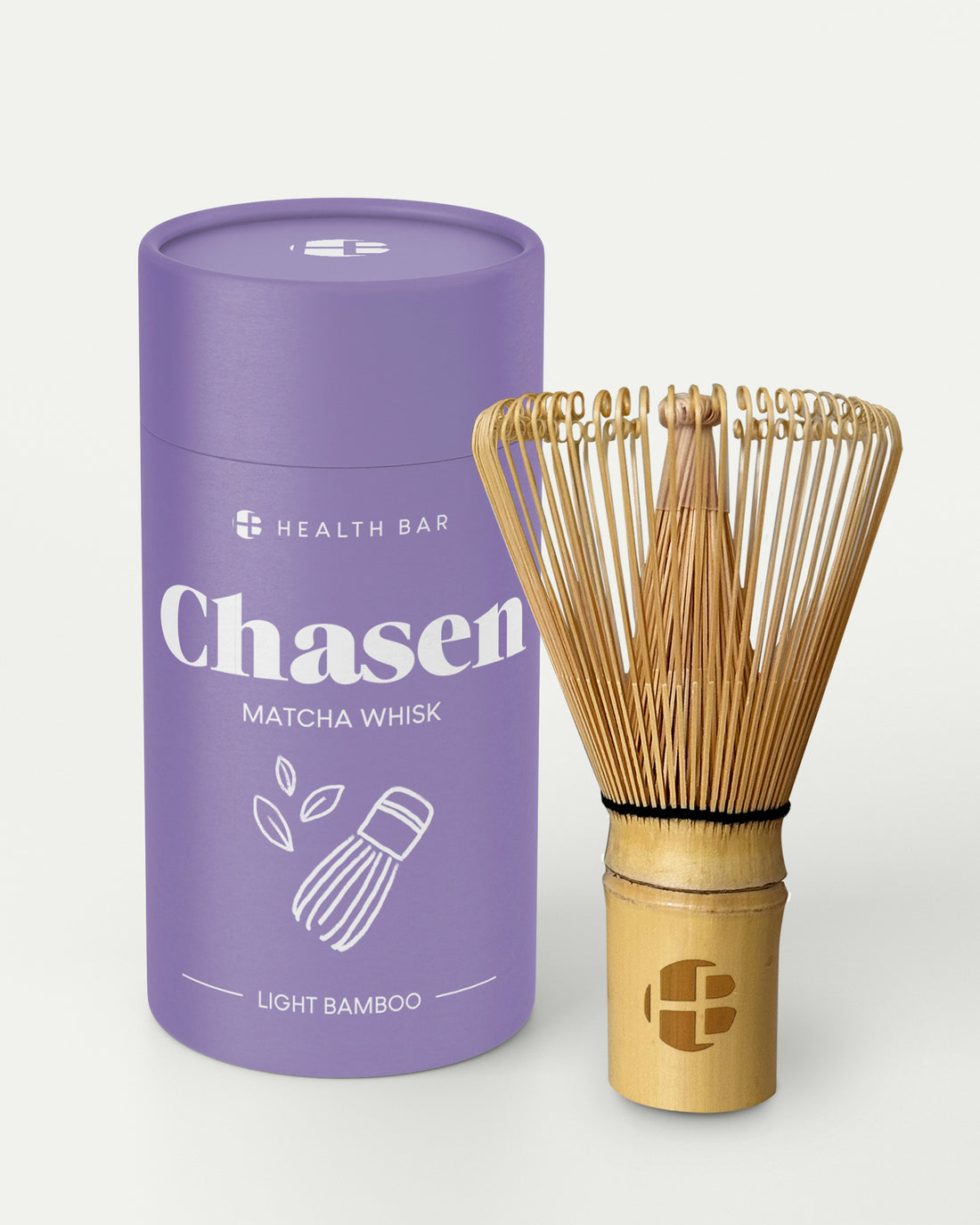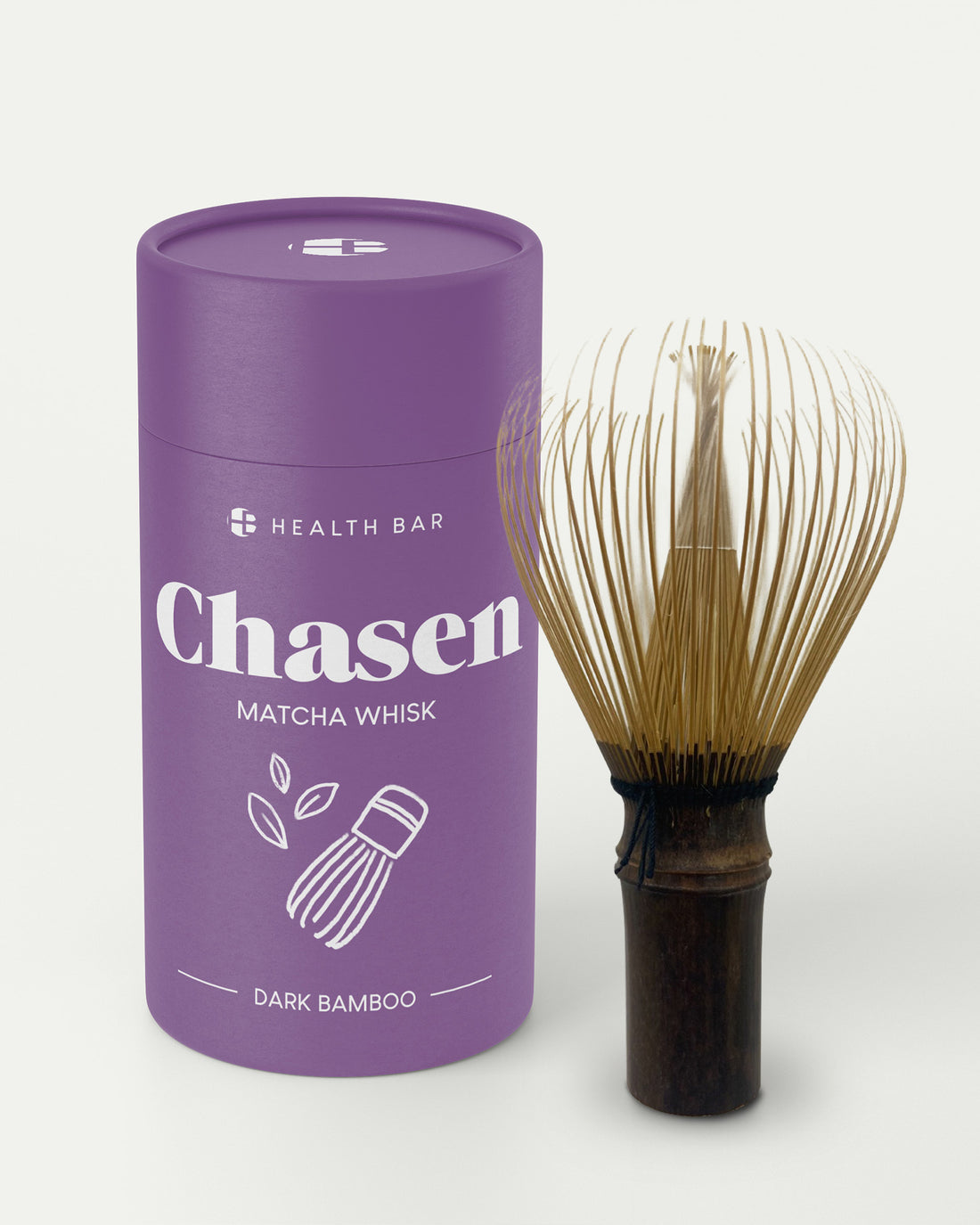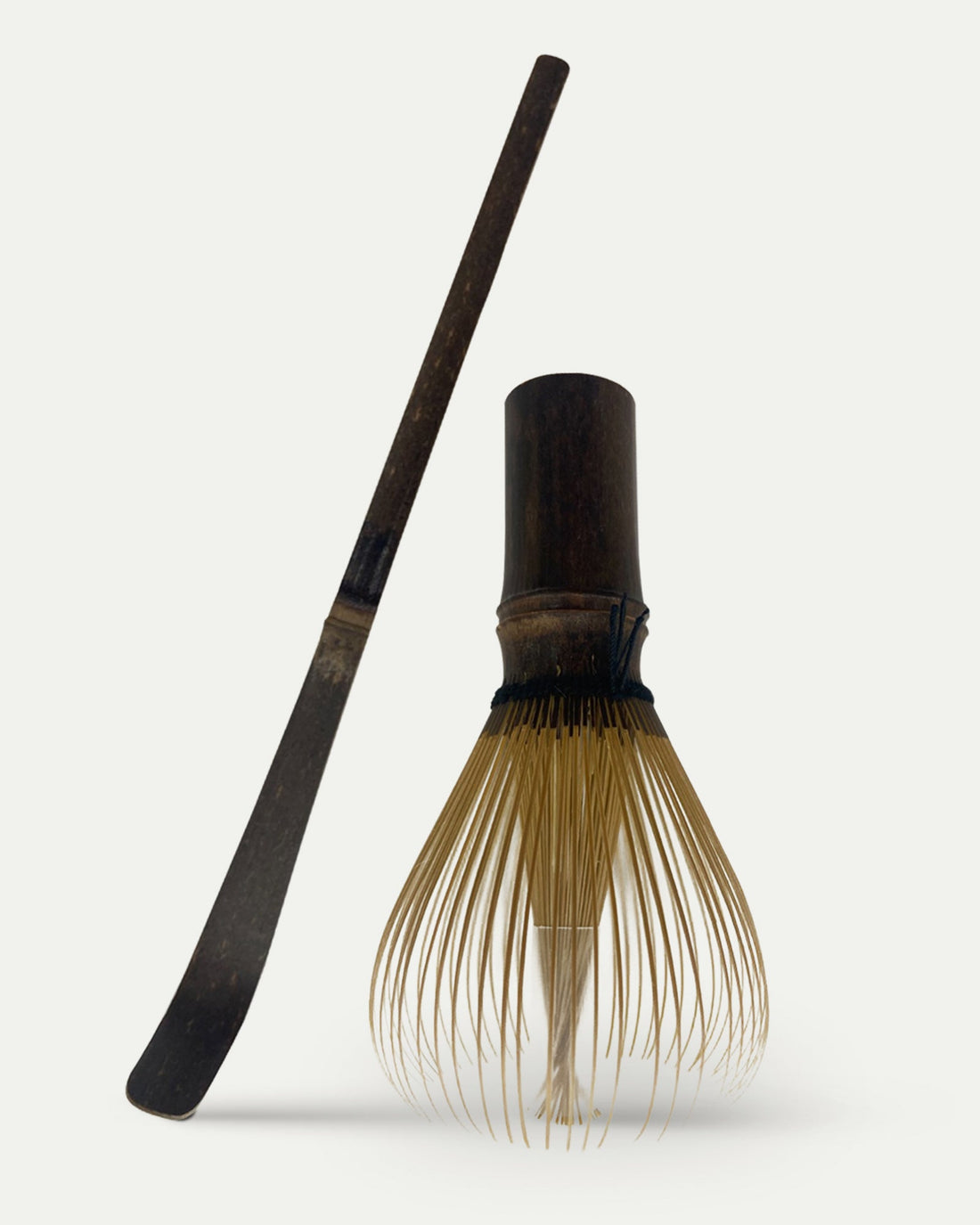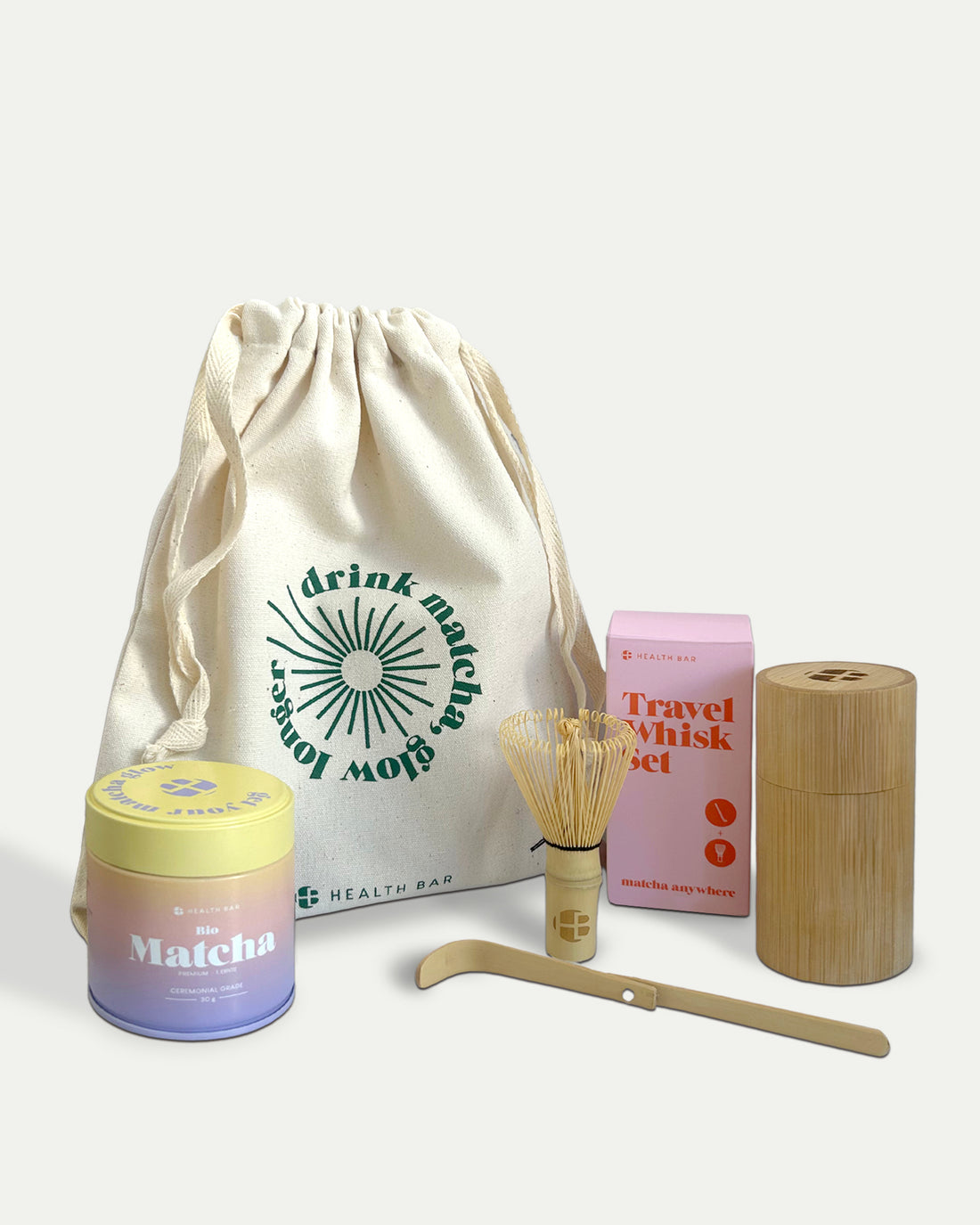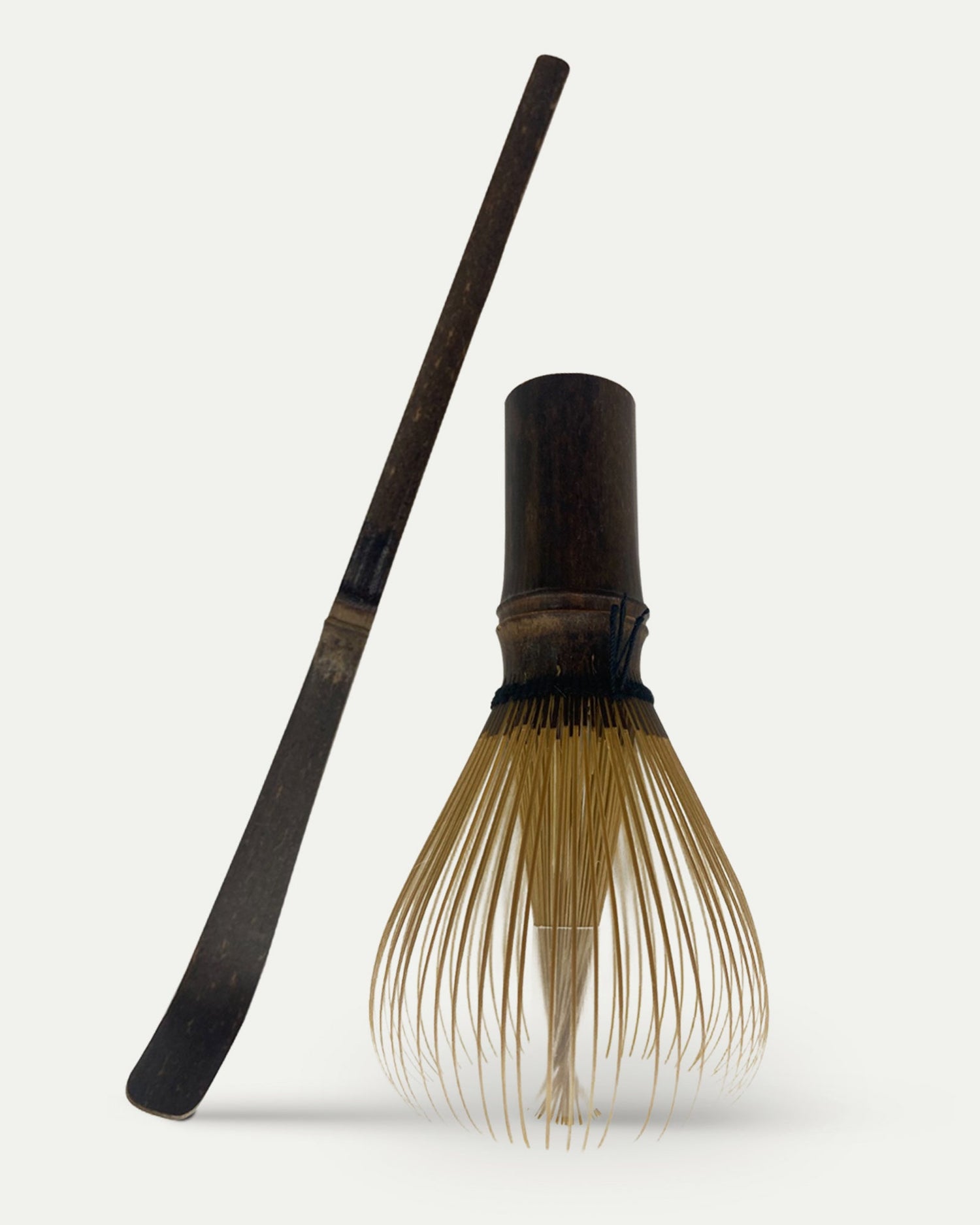
Instructions and tips
How to use the Matcha whisk correctly
A matcha whisk, also known as a chasen, is an essential tool for the traditional preparation of matcha tea. This handmade bamboo whisk not only creates the characteristic foam on your tea, but also brings a piece of Japanese culture into your home. In this article, you'll learn everything you need to know about the proper use, care, and storage of your matcha whisk.
Matcha Tradition: Why the bamboo whisk is indispensable
The chasen is more than just a tool—it's a handcrafted work of art, carved with great precision from bamboo. Each broom is unique and traditionally crafted in Japan.
Why is the matcha whisk so important? When preparing matcha, it ensures that the fine powder is evenly mixed with the water. The result: a velvety, foamy consistency that can never be achieved with a spoon or conventional whisk. The matcha whisk helps you elevate the tea to a new level of flavor and makes every sip a special experience. Without the whisk, the matcha would often be lumpy and lose its magic.
Maintaining and cleaning your matcha whisk – How to keep it as good as new for a long time
Proper care of your matcha whisk is crucial to extending its lifespan. This simple maintenance will ensure your matcha whisk remains a faithful companion for years to come. Here are the most important tips:
-
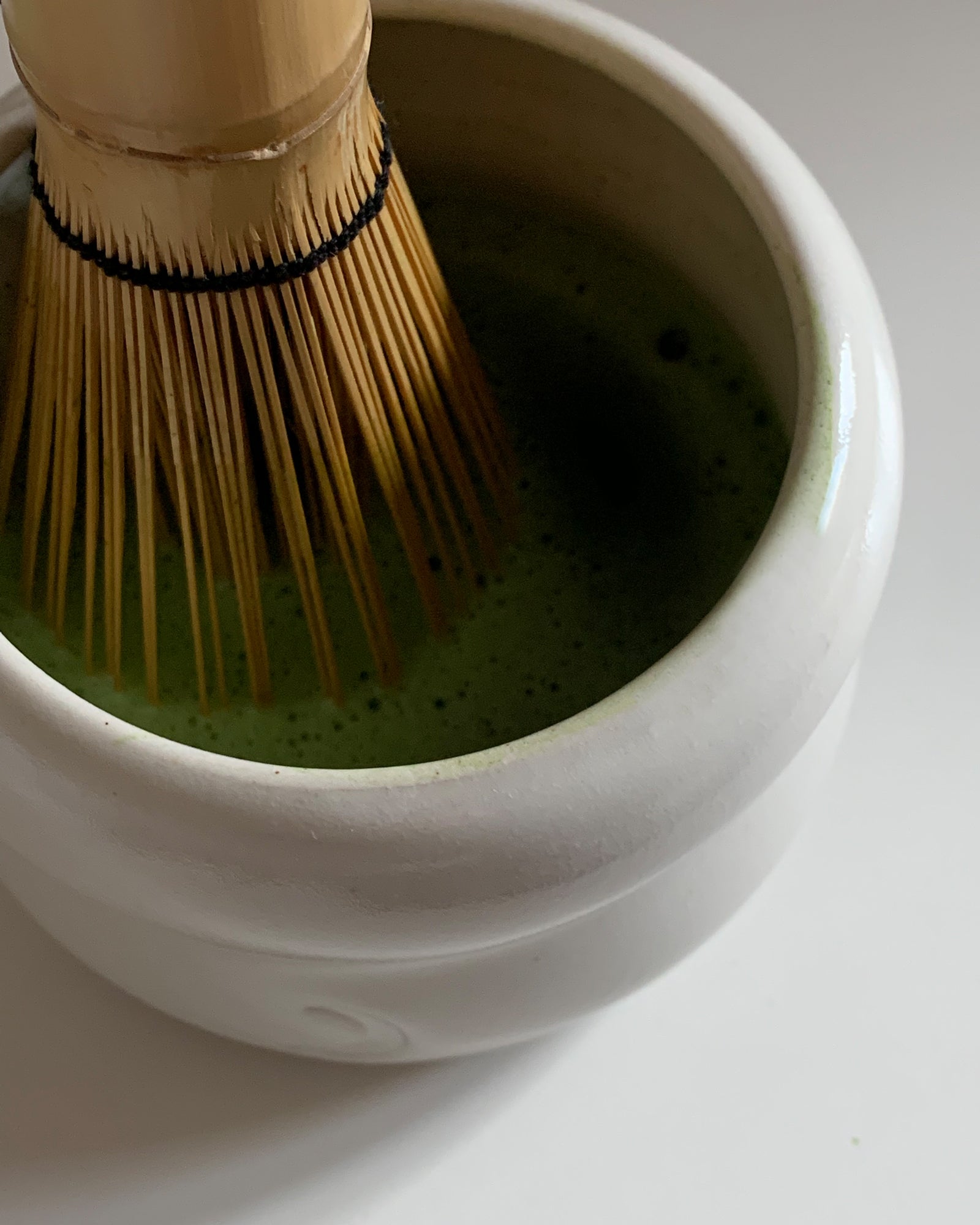
1. Clean after each use
Rinse the fine bristles of your chasen under warm water. Avoid using soap or other cleaning agents, as these could damage the natural material.
-
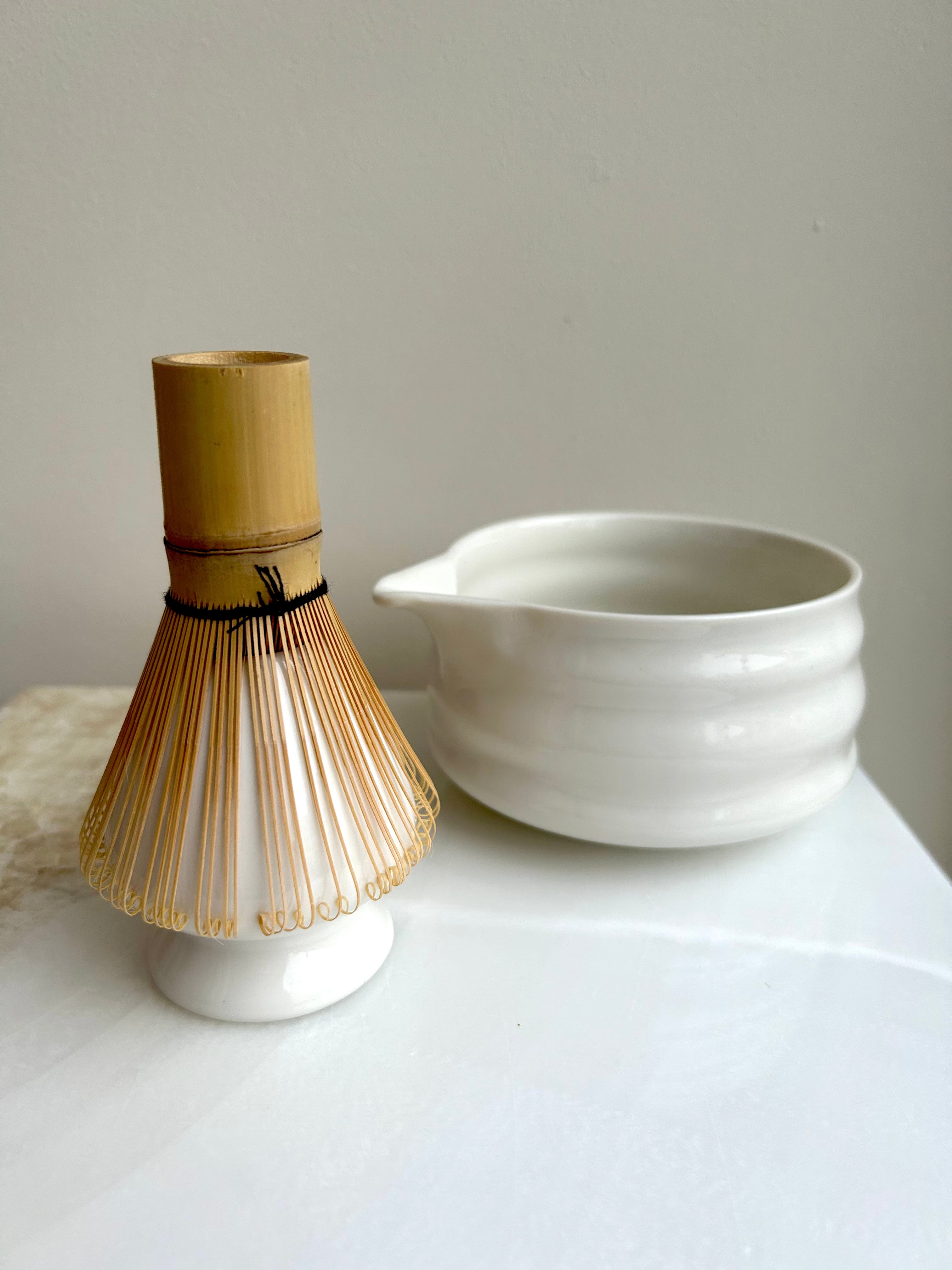
2. Dry properly
Let the whisk air dry, preferably on a special matcha whisk holder (chasen yasume). This will preserve the shape of the bristles and prevent them from breaking.
-
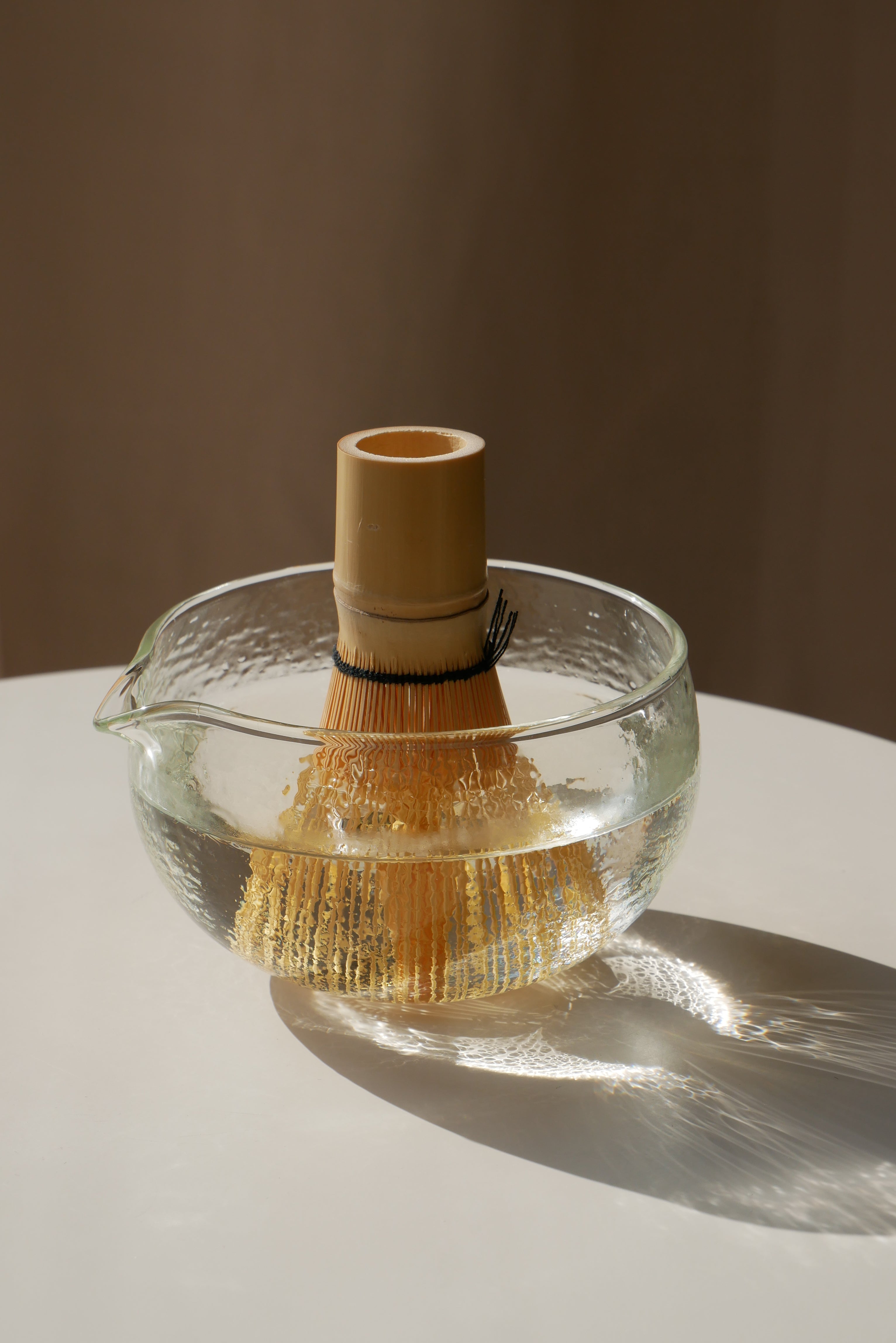
3. Do not soak in water
Bamboo is sensitive to moisture. Never leave your broom in water for extended periods, as this can cause the material to swell and the bristles to deform.
The 5 most common mistakes when using the Matcha whisk – and how to avoid them
While using a matcha whisk may seem simple, there are some common mistakes beginners make. Here are the top 5 and how to avoid them:
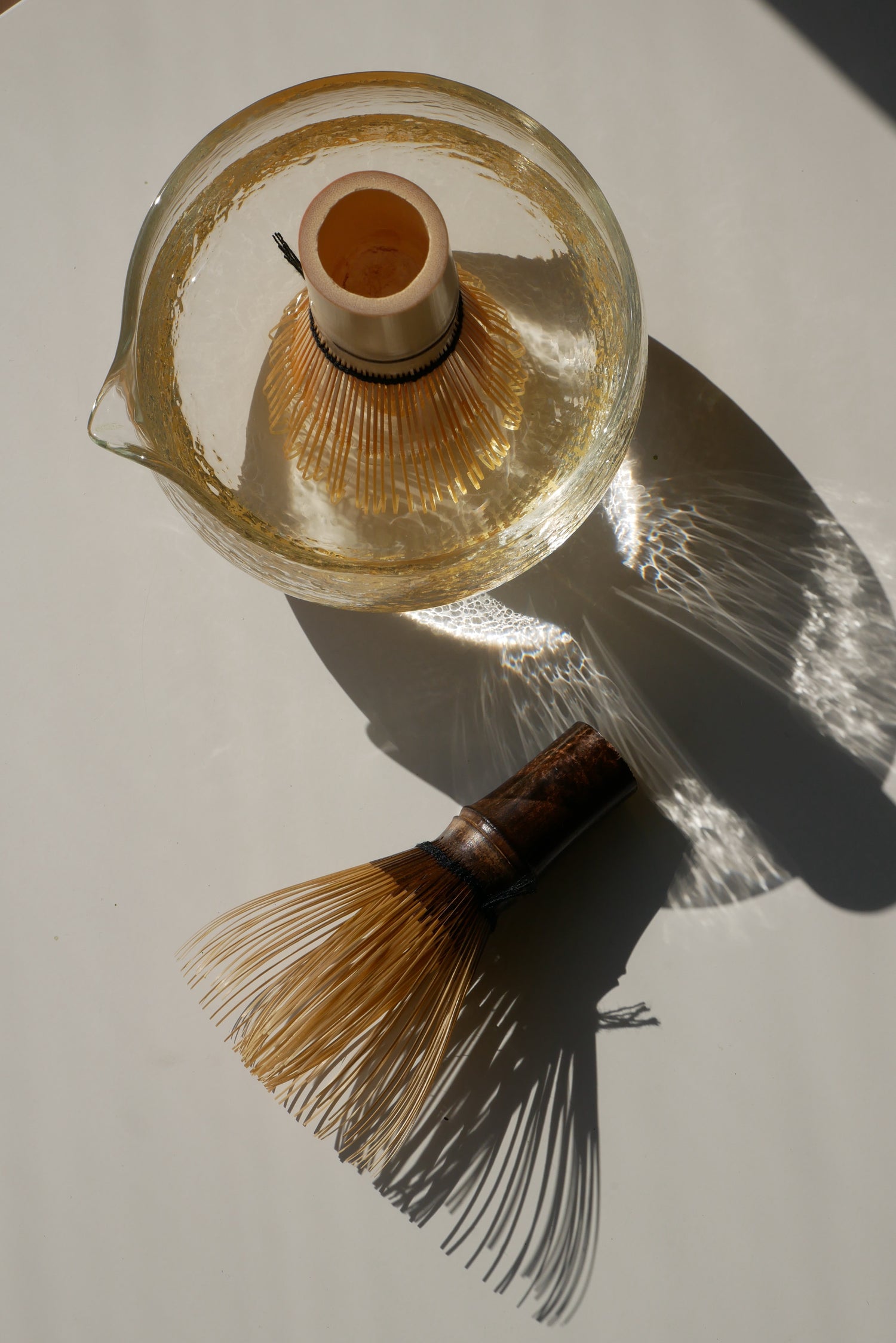
Using water that is too hot
Matcha should be prepared with water at approximately 70-80°C. Water that is too hot can impair the flavor.
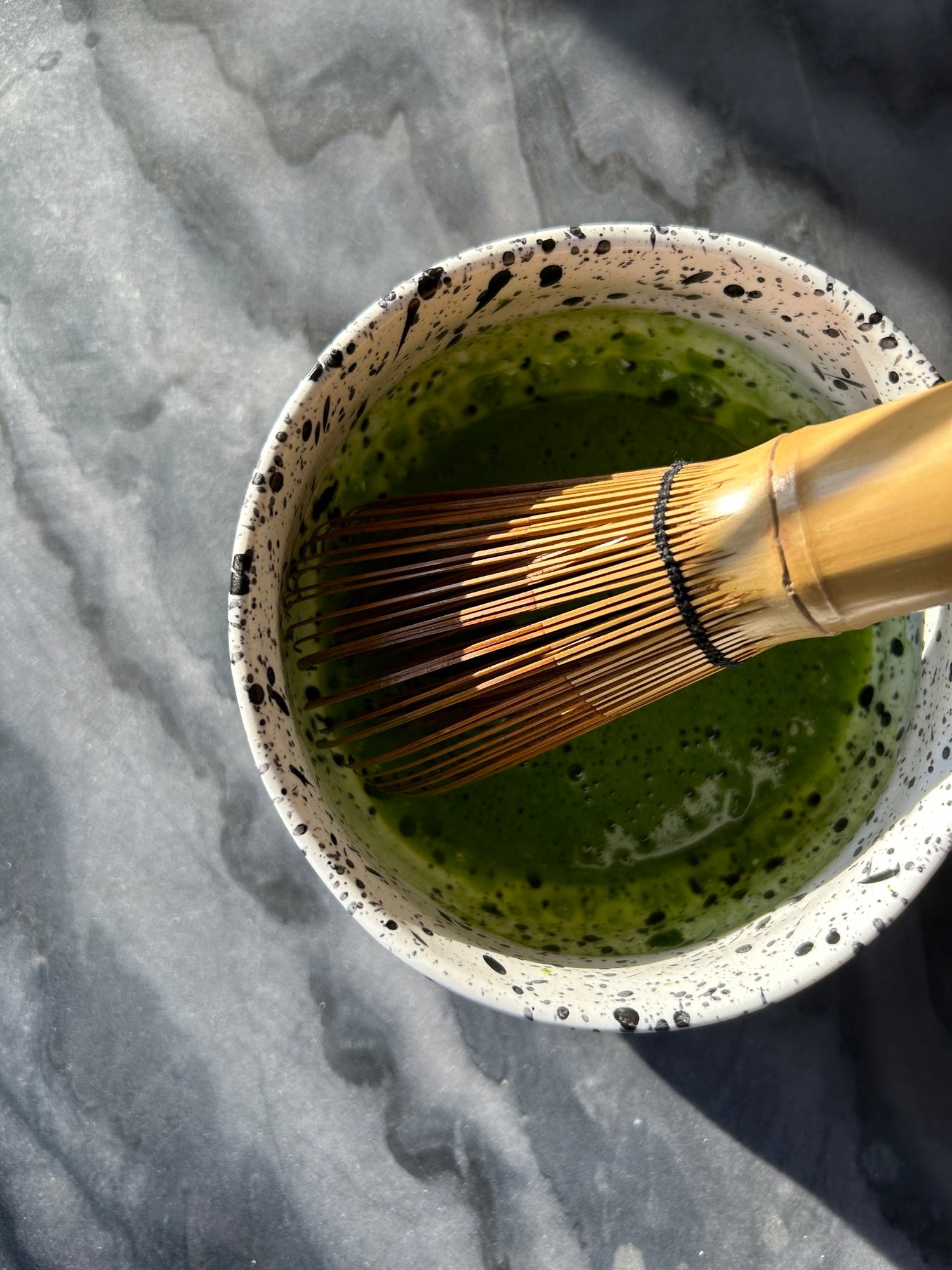
Wrong technique
Instead of making circular motions, whisk the matcha in a quick, W-shaped motion. This ensures better foam formation.
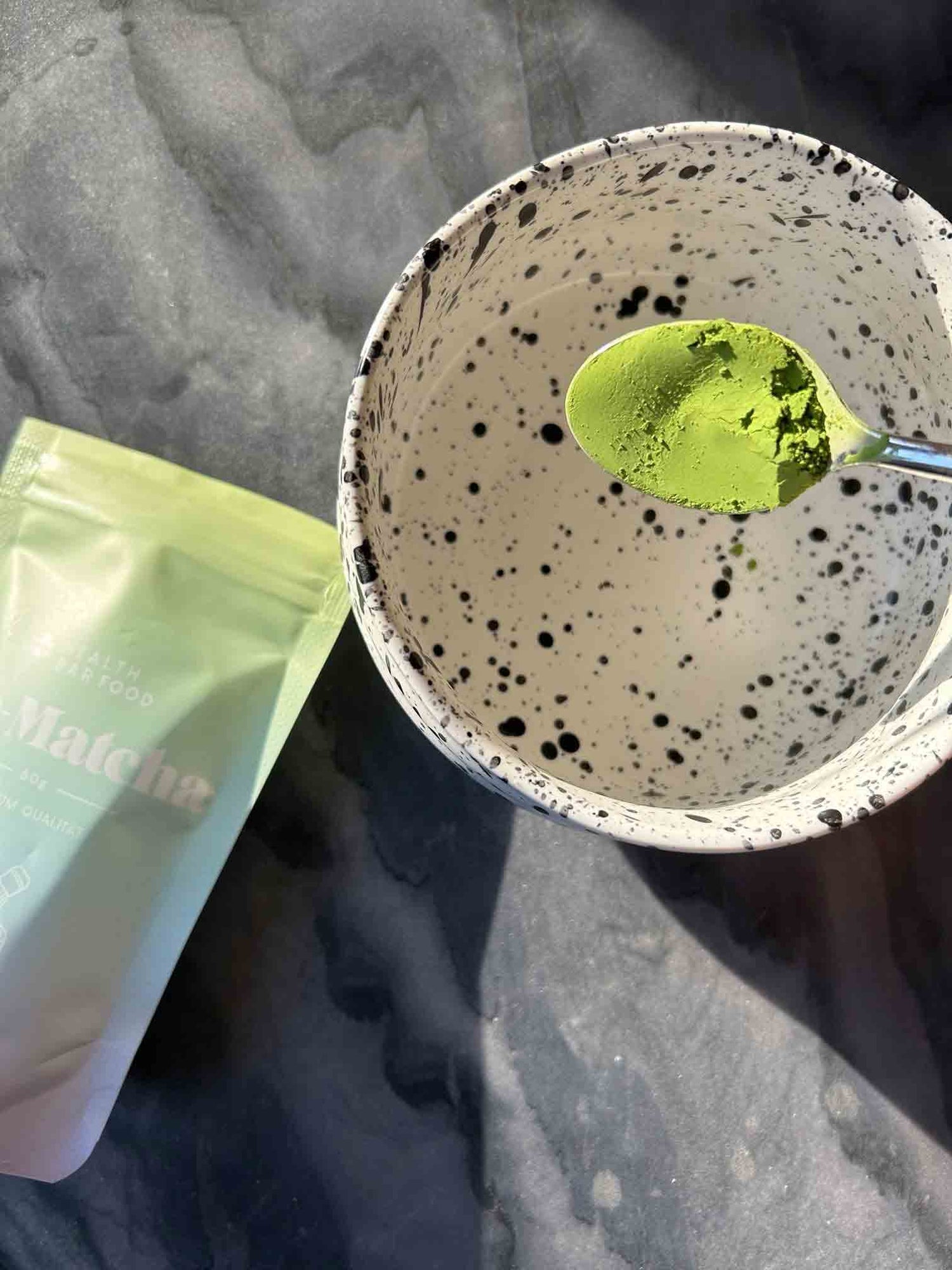
Too little or too much matcha powder
Use about 1-2 grams of matcha (one teaspoon) per serving. This ensures the ideal balance of taste and consistency.
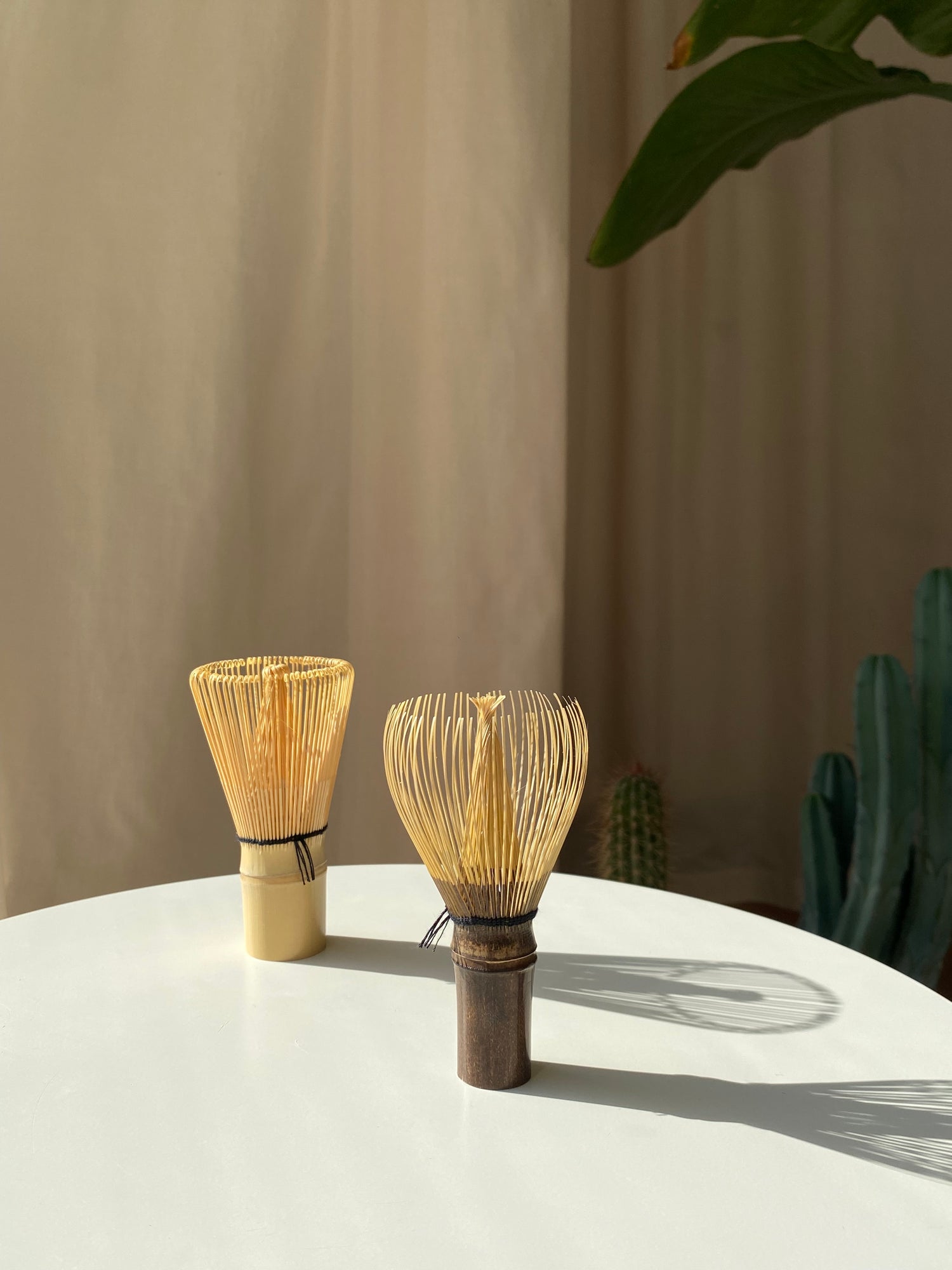
Not cleaning brooms properly
Residual matcha powder can harden and damage the bristles. Always rinse the whisk immediately after use.
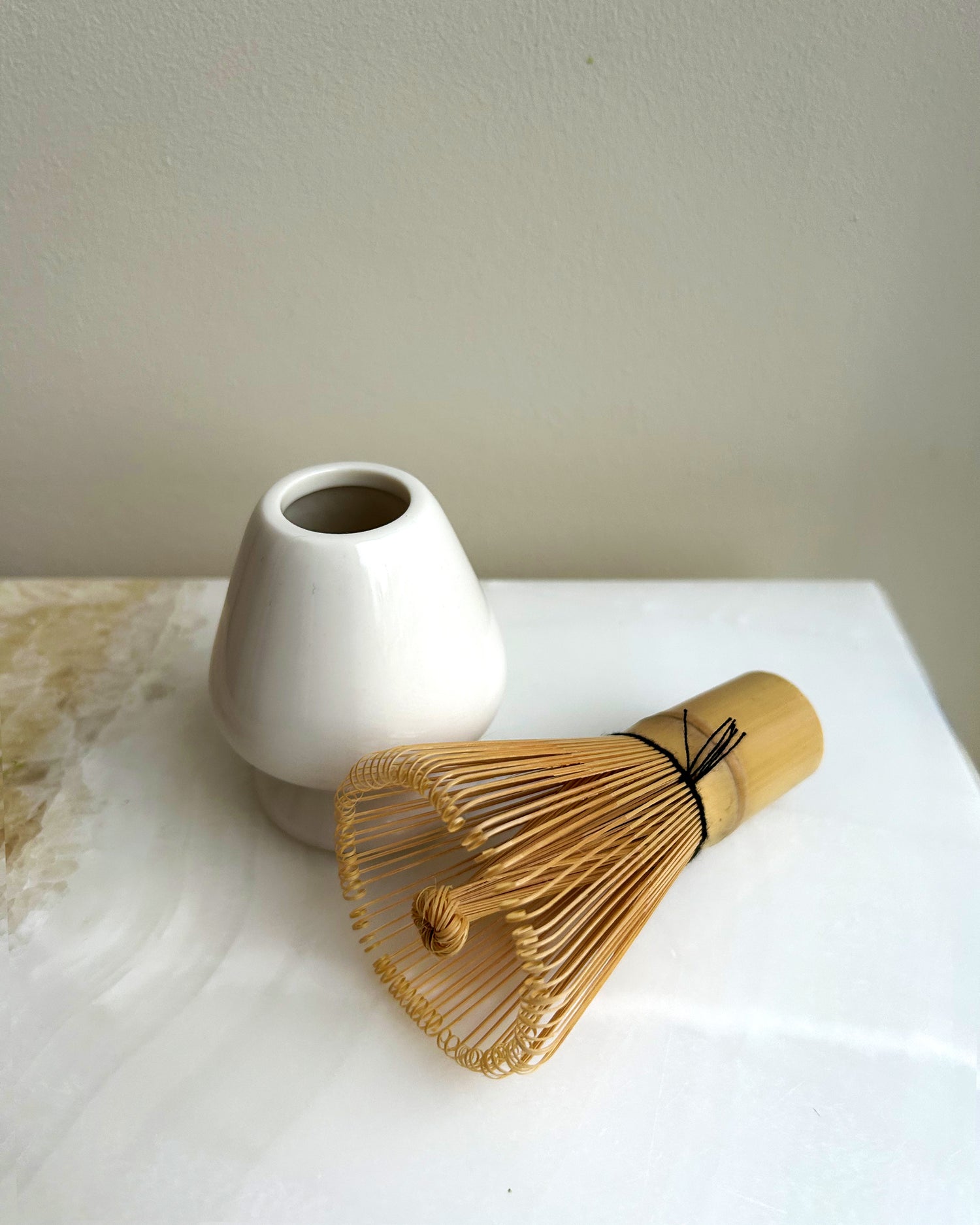
Store the broom flat
This can deform the fine bristles. Use a broom holder instead.
Storing Matcha Whisks Properly: Tips for Long-Lasting Quality
Proper storage is key to extending the lifespan of your matcha whisk. Use a whisk holder that supports the fine bristles and preserves their shape. Store the whisk in a dry place, away from moisture, as bamboo can mold or swell in excess moisture. Also, avoid direct sunlight, as UV light can dry out the material and make it brittle. A well-maintained and correctly stored matcha whisk will provide you with perfect matcha moments for many years to come.
Buying a Matcha Whisk: What You Should Pay Attention To
Invest in a high-quality matcha whisk to maximize the potential of your matcha tea. When purchasing a matcha whisk, there are a few things to consider to ensure the best possible quality:
-
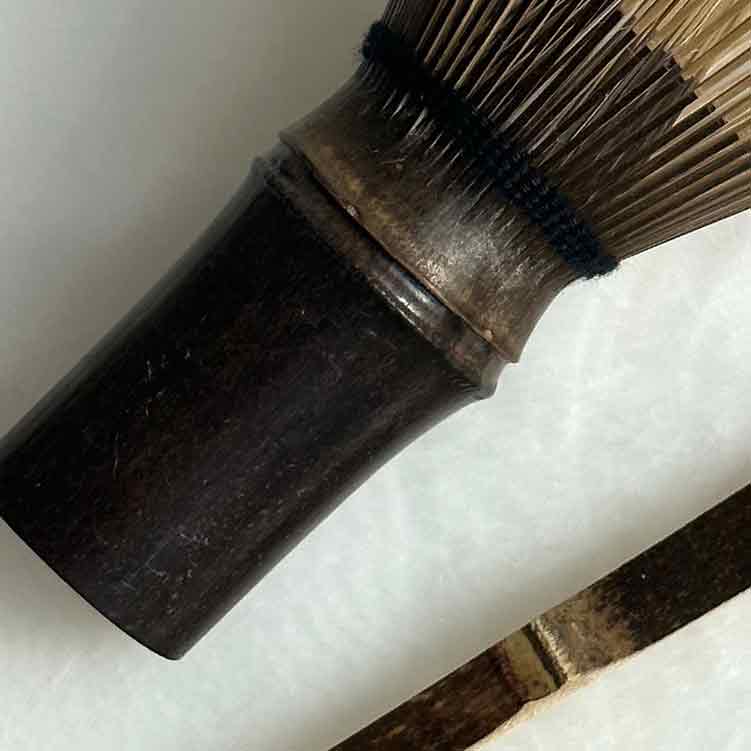
Material
Make sure the matcha whisk is made of high-quality bamboo. Cheaper versions made of inferior materials often don't last long.
-
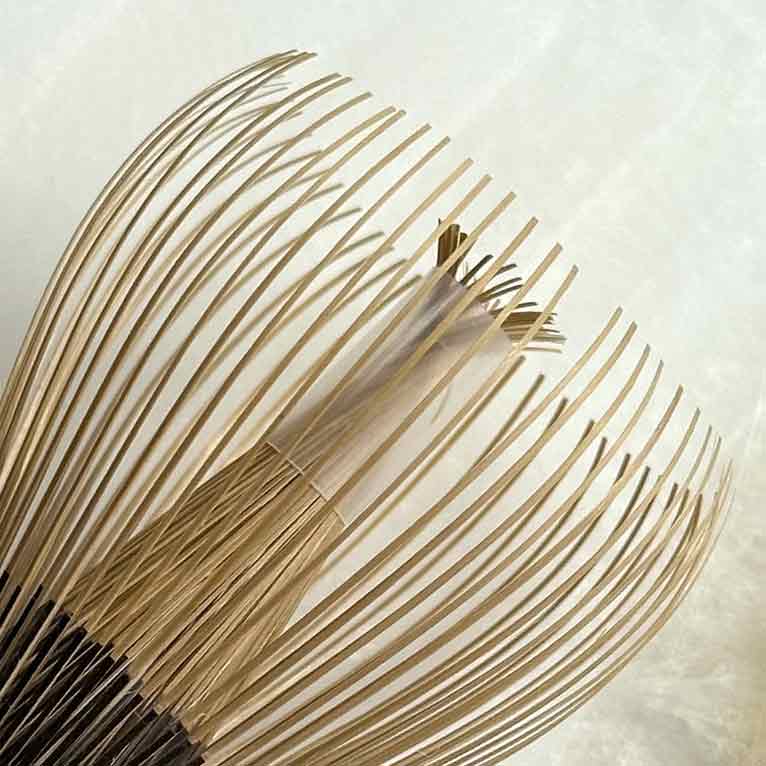
Number of bristles
Matcha whisks (Japanese: chasen) are available with varying numbers of bristles. Models with more bristles are suitable for producing a particularly fine lather, while fewer bristles are easier to handle for beginners.
-
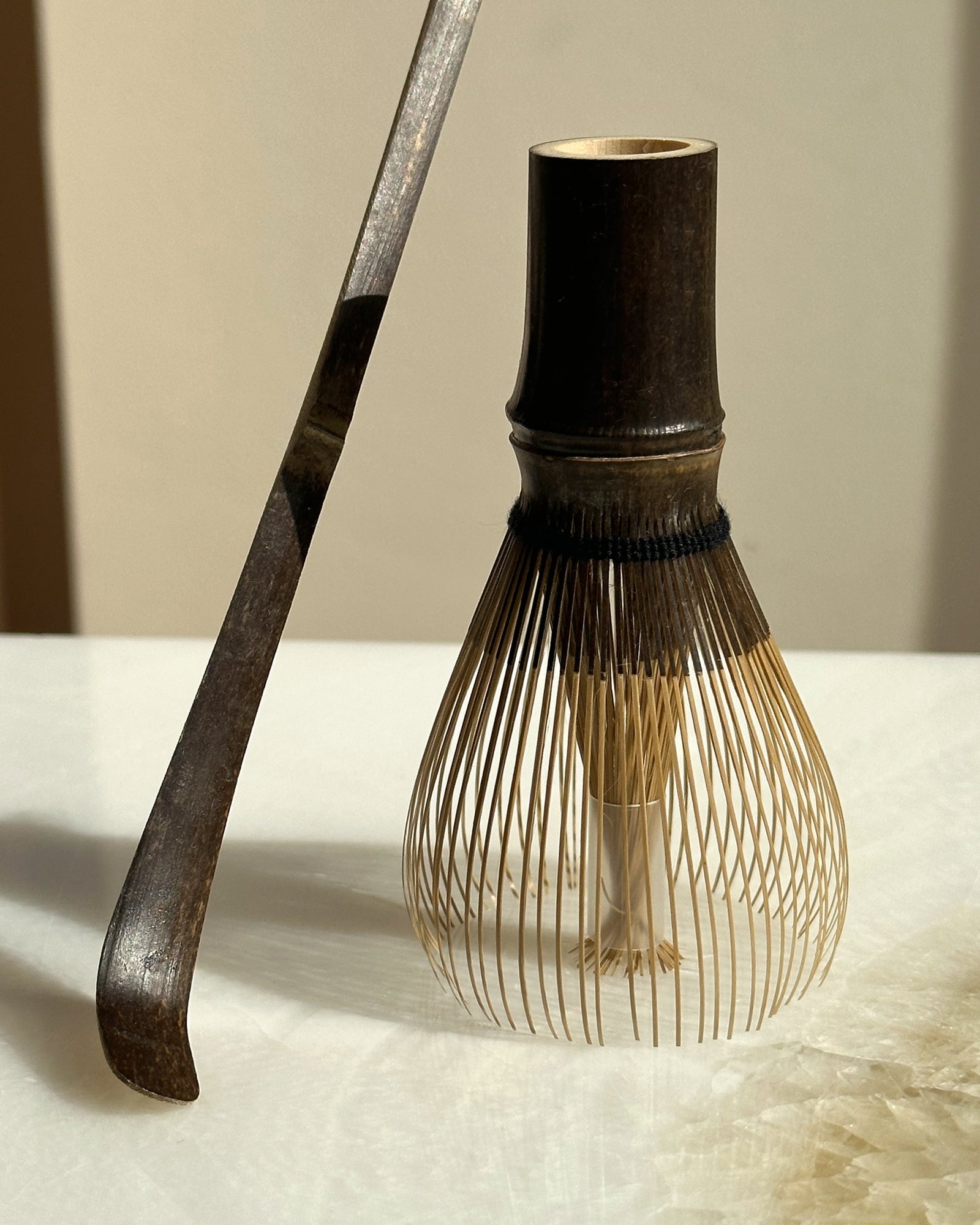
Handwork
A handcrafted chasen offers better workmanship and feel than machine-made models.








